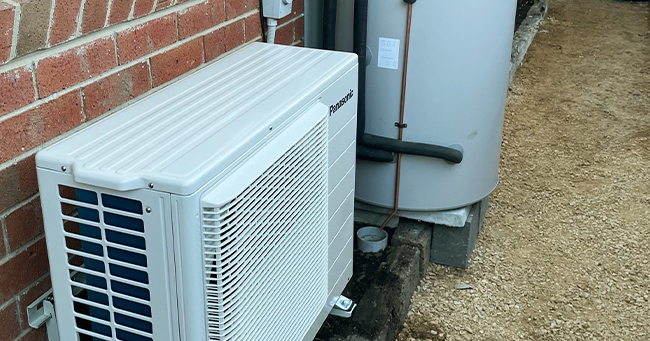
Panasonic Australia and Reclaim Energy are offering an exciting new CO2 hot water heat pump solution in the Australian market, delivering consumers energy savings, as a cost-effective alternative to gas and electric hot water heating.
Melbourne-based Panasonic staff member Preshit Fadnis has installed the solution at his family home, replacing a Gas Instantaneous hot water system to increase comfort, efficiency and sustainability for his family of four.
Preshit’s motivation to turn to heat pump technology was in line with his desire to go all-electric, and he has now disconnected gas completely from his property. The installation process for the family was easy and hassle free, with the installers taking just a couple of hours to convert the system. There was no need to make any adjustments to the home, such as installation or ductwork, to optimise performance.
For Preshit, the biggest advantage of using a CO2 Heat Pump Hot Water System over traditional heating and cooling systems has been the efficiency of the system and integration with solar panels, which has significantly reduced his energy bill since he installed the unit over a year ago.
He explains “There has been a substantial reduction in our bills since the heat pump has been installed. We have aligned the operation of the heat pump with the solar generation times and so most of the time i.e. 9 months of the year we practically get free hot water.”


The chart above shows the family’s energy-efficiency journey. July was the month where they used the most hot water (i.e. around 110Kwh or $0.3 / Kwh). Theoretically they spent about $33 in the winter month of July. However, most of this electricity was used up when the solar system was on, so they are able to have practically free hot water across the year except for around $10-15 total in the 3 winter months. For the summer months, solar generation far exceeds energy consumption due to the heat pump and so hot water is available at nil cost.
With the previous gas system, Preshit estimates he was paying around $150 per quarter for hot water.
“Also, with CO2 HWS another important benefit is that you can measure electricity consumed per appliance relatively easily but with Gas HWS that is not possible.”
There are also benefits in terms of the living experience. As well as there being no change to reliable hot water production, the system is ‘super quiet’.
Preshit explains: “In fact the installer commented that it was the quietest system he had ever seen as mine was the first Panasonic CO2 HWS he was installing. As far as maintenance is concerned, we have not had to look at the unit since installation. With the previous gas system, you could hear the gas burner coming on every time and the pilot flame used to go off in very windy weather. With this system, that problem is gone completely.”
